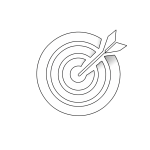Introduction to Special Education
 Course Outcomes
Course Outcomes
- Describe the professional practices of special education teachers.
- Identify the 13 disability categories recognized by the Individuals with Disabilities Act (IDEA).
- Examine the historical and philosophical foundations of special education.
- Explain intervention and assessment procedures for prospective special education students.
- Describe the utility of important collaborative relationships: school, district, and family members/guardians.
- Identify relevant pedagogy to maximize student learning.
Knowledge. The teacher understands how personal identity, worldview, and prior experience affect perceptions and expectations, and recognizes how they may bias behaviors and interactions with others.
Knowledge. The teacher understands laws related to learners’ rights and teacher responsibilities (e.g., for educational equity, appropriate education for learners with disabilities, confidentiality, privacy, appropriate treatment of learners, reporting in situations related to possible child abuse).
Disposition. The teacher sees him/herself as a learner, continuously seeking opportunities to draw upon current education policy and research as sources of analysis and reflection to improve practice.
Disposition. The teacher understands the expectations of the profession including codes of ethics, professional standards of practice, and relevant law and policy.
Disposition. The teacher actively shares responsibility for shaping and supporting the mission of his/her school as one of advocacy for learners and accountability for their success.
Knowledge. The teacher understands students with exceptional needs, including those associated with disabilities and giftedness, and knows how to use strategies and resources to address these needs.
Disposition. The teacher respects learners’ differing strengths and needs and is committed to using this information to further each learner’s development.
Knowledge. The teacher understands the strengths and needs of individual learners and how to plan instruction that is responsive to these strengths and needs.
Knowledge. The teacher understands major concepts, assumptions, debates, processes of inquiry, and ways of knowing that are central to the disciplines s/he teaches.
Disposition. The teacher realizes that content knowledge is not a fixed body of facts but is complex, culturally situated, and ever evolving. S/he keeps abreast of new ideas and understandings in the field.
Disposition. The teacher recognizes the potential of bias in his/her representation of the discipline and seeks to appropriately address problems of bias.
Knowledge. The teacher understands the ways of knowing in his/her discipline, how it relates to other disciplinary approaches to inquiry, and the strengths and limitations of each approach in addressing problems, issues, and concerns.
Knowledge. The teacher understands schools as organizations within a historical, cultural, political, and social context and knows how to work with others across the system to support learners.
Performance. The teacher uses a variety of methods to engage learners in evaluating the learning environment and collaborates with learners to make appropriate adjustments.
Performance. The teacher works independently and collaboratively to examine test and other performance data to understand each learner’s progress and to guide planning.
Disposition. The teacher is committed to the ethical use of various assessments and assessment data to identify learner strengths and needs to promote learner growth.
Knowledge. The teacher knows when and how to access resources and collaborate with others to support student learning (e.g., special educators, related service providers, language learner specialists, librarians, media specialists, community organizations).
Disposition. The teacher embraces the challenge of continuous improvement and change.
Performance. The teacher collaborates with families, communities, colleagues, and other professionals to promote learner growth and development.
Performance. The teacher plans collaboratively with professionals who have specialized expertise (e.g., special educators, related service providers, language learning specialists, librarians, media specialists) to design and jointly deliver as appropriate learning experiences to meet unique learning needs.
Performance. The teacher works collaboratively with learners and their families to establish mutual expectations and ongoing communication to support learner development and achievement.
Knowledge. The teacher knows how to work with other adults and has developed skills in collaborative interaction appropriate for both face-to-face and virtual contexts.
Knowledge. The teacher understands and identifies differences in approaches to learning and performance and knows how to design instruction that uses each learner’s strengths to promote growth.
Knowledge. The teacher understands the relationship between motivation and engagement and knows how to design learning experiences using strategies that build learner self-direction and ownership of learning.
Disposition. The teacher believes that plans must always be open to adjustment and revision based on learner needs and changing circumstances.
Knowledge. The teacher knows when and how to use appropriate strategies to differentiate instruction and engage all learners in complex thinking and meaningful tasks.
